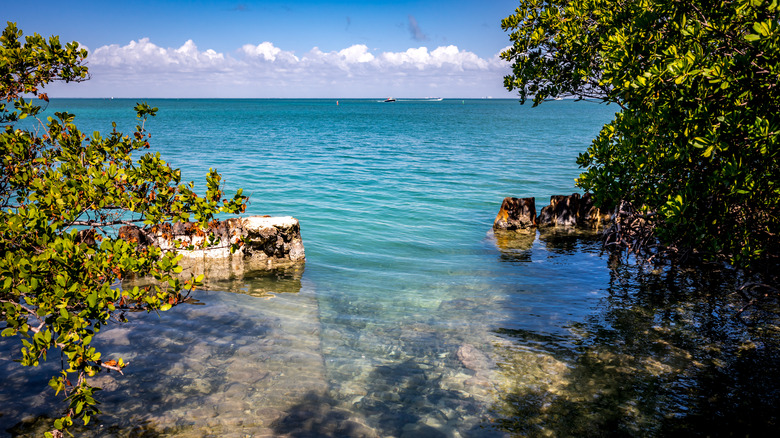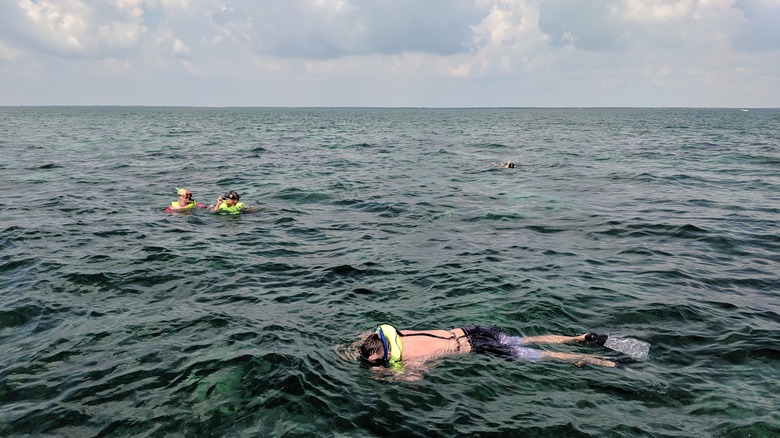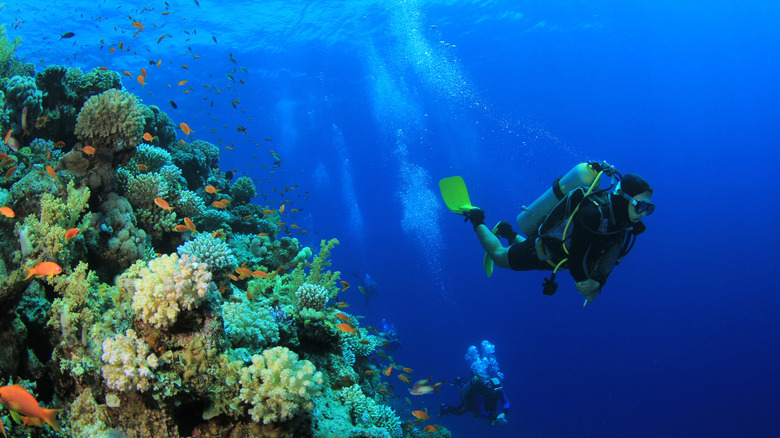The National Park That Lets Visitors Explore The Remains Of Famous Shipwrecks
Biscayne National Park in South Florida sits in the northernmost part of the Keys. Just south of Miami, the national park holds some of Florida's most idyllic natural landscapes. Biscayne has an abundance of coral reefs as well as mangrove forests that cover the shoreline, thick with roots sitting above the waterline, save for the moments in the day when the tide comes in.
What makes Biscayne such a unique national park among the many across the United States is that it comprises 90% water. The portions of the park that are land hold long-standing histories of Native Americans, while the water has its own stories. The bottom of the ocean in this national park contains the remains of several shipwrecks, many of them shallow enough to be accessible to snorkelers and scuba divers. This watery path of shipwrecks is called the Maritime Heritage Trail, and visitors can easily access these sites by boat. The national park provides maps for boaters to find these sites, which are marked by mooring buoys.
Where to snorkel in Biscayne National Park
Visitors can access six shipwrecks in Biscayne National Park, though several more are hidden in the waters. "We know of at least 44 wrecks within the park boundary but there may be many, many more out there," Charles Lawson, archeologist of Biscayne National Park, said, according to Visit Florida. "There may be hundreds of wrecks out there. But we've started with offering trips to see (a limited number). The tours are suitable for the novice and experienced snorkeler alike."
The six wrecks occurred over a span of 100 years, so swimmers can observe a range of nautical wreckages in various stages of preservation. Accessible by snorkeling, the oldest wreck in the grouping is the Arratoon Apcar, which sank in 1878 on its way to Havana. The captain underestimated his berth from the rocks below and ran aground. Thankfully, everyone on board survived.
The next snorkeling-accessible site is the Fowey Rocks Lighthouse, built in 1848, which isn't technically a shipwreck but was rather a crucial part of preventing wrecks along the coastline. Since this sits atop the water, snorkelers can easily enjoy swimming near it. Another wreck is the Mandalay, which went down in 1965 without casualties. The ship went aground on Long Reef, where it lies still, an easy dive from the surface.
Spots to scuba dive in Biscayne National Park
Some of the wrecks in Biscayne National Park are better accessed by scuba diving rather than snorkeling and require a bit more technical precision on the part of the visitors. The Erl King sank in 1891 after it went aground on Long Reef, but there was enough time to save all passengers and cargo. The ship is only 20 feet below the surface of the water, so snorkelers can still take in the wreck, though for more thorough exploring, diving is better. Another is the Alicia, which sank in 1905 on its way to Havana, with a plethora of luxury cargo. There was a storm, and the ship hit Long Reef, but the crew was saved thanks to a nearby vessel. Since the wreck isn't too far down, it's a great spot for new scuba divers.
The Lugano is another site that's well suited to divers. The boat went down in 1913 and was one of the largest wrecks to occur in the Florida Keys. Because of a storm, the ship crashed into Long Reef, but all passengers were saved, and much of the cargo was too. The crew could work on the boat for over a week before the ship went under. However, the Lugano sits so close to the surface that this wreck actually caused a ship accident. A yacht hit the Lugano in 1917 because the hull was only 25 feet below sea level.


